Introduction: Best organic baby clothes
Best organic baby clothes picking what to dress your child in is more than a matter of design; it’s a choice that affects their convenience, health, and the world they will inherit. As parents become more aware of the products touching their children’s sensitive skin, the demand for natural children’s clothing has increased significantly. This guide explores the world of organic textiles, offering a detailed look at the best natural infant clothing for 2025 that masterfully combines convenience, security, and undeniable charm.
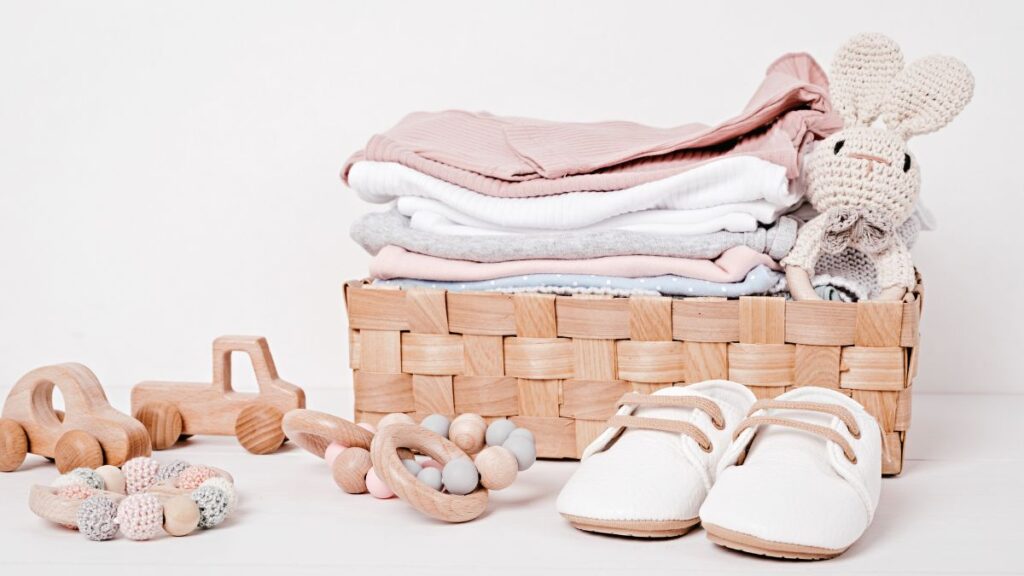
We will delve into why natural cotton is an exceptional option, explore other sustainable products, and assess the leading brands that are at the forefront of creating charming and ethical baby fashion. Let us help you make informed, confident choices for your child’s wardrobe.
Why Choose Organic for Your Baby’s Wardrobe?
A child’s skin is a marvel of softness and sensitivity. Traditional clothes, particularly items made from non-organic cotton, can harbor a surprising number of chemicals.
The Problem with Conventional Cotton
Conventional cotton farming is one of the most chemically intensive agricultural practices globally. When an infant uses clothes made from these products, their skin can be in direct, extended contact with potential irritants.
The Benefits of Organic Fabrics
Organic baby clothing offers a gentle and pure option. By selecting natural, you are choosing fabrics that are:
- Free from Harmful Chemicals: Organic farming requirements prohibit making use of artificial pesticides, fertilizers, and genetically modified organisms (GMOs). This results in a cleaner, purer basic material.
- Softer and More Breathable: Organic cotton fibers are generally longer and more potent since they are hand-picked rather than machine-harvested. This procedure protects the fiber’s stability, resulting in a material that is incredibly soft, resilient, and more breathable against your baby’s skin.
- Hypoallergenic: The lack of chemical residues makes natural materials a naturally hypoallergenic option. This is especially advantageous for children with sensitive skin, allergies, or eczema, as it reduces the risk of inflammation and flare-ups.
- Environmentally Responsible: Organic agriculture promotes biodiversity, saves water, and constructs healthy soil. By choosing organic, you are supporting farming practices that are more gentle on the planet, ensuring a healthier world for your child’s future.
Comprehending Certifications: Your Guide to Trustworthy Labels
When searching for organic infant clothing, you will experience different labels and accreditations. Understanding what they represent is key to making a truly informed purchase. These certifications are not simply marketing terms; they are guarantees of quality, safety, and ethical production from farm to complete garment.
GOTS (Global Organic Textile Standard).
The Global Organic Textile Standard (GOTS) is the gold standard for natural textiles. It is the most thorough and strict certification offered.
- What it Guarantees: For a product to be GOTS-certified, it needs to contain at least 95% licensed organic fibers. It also implements rigorous social criteria based on the International Labour Organization (ILO), ensuring reasonable incomes and safe working conditions for everyone involved in production.
- Why it Matters: When you see the GOTS logo, you can be positive that the garment is genuinely natural, safe for your baby, and morally produced. It is a holistic certification that offers complete assurance.
OEKO-TEX Standard 100.
While not an organic accreditation, OEKO-TEX Standard 100 is another essential label to look for.
- What it Guarantees: This accreditation guarantees that every part of the garment– from the thread and buttons to the fabric itself– has actually been tested for and is free from a long list of hazardous compounds. It evaluates chemicals that are lawfully prohibited and regulated, as well as those known to be harmful but are still legally permitted.
- Why it Matters: A garment can be made from conventional cotton and still be OEKO-TEX certified if it is free from toxic residues. While GOTS is the ideal standard, OEKO-TEX offers a crucial layer of security, ensuring that the end product is safe and non-toxic when worn against your child’s skin.
Top Organic Baby Clothes Brands for 2025.
Here, we present a curated selection of brand names that stand out in the development of organic infant clothing. These companies are renowned for their commitment to quality, sustainability, and exceptional style.
Hanna Andersson: The Leader in Durability and Timeless Design.
For decades, Hanna Andersson has been a household name for top-quality children’s clothes. Their foundation is developed on Swedish-style concepts and a commitment to creating “huggable” clothing that lasts.
- Materials and Certifications: The bulk of Hanna Andersson’s collection is crafted from GOTS-certified organic cotton and meets the OEKO-TEX Standard 100. Their pajamas are famous for their softness and ability to withstand many washes without fading or losing shape.
- What We Love: The brand name is famous for its hand-me-down quality. The resilient building and construction imply that these pieces can be given to siblings and still look great. Their intense, joyful patterns and traditional stripes are classic, and the unisex styles make them a valuable option for any family.
- Best For: Everyday wear, relaxing pajamas, and creating a pill closet of top-quality basics. Their zip sleepers are a mom’s and dad’s favorite for easy diaper changes.
Monica + Andy: Hospital-Crate Experts and Unmatched Softness.
A mother founded Monica + Andy on a mission to discover the softest, best fabrics for her newborn. The brand has considered becoming associated with buttery-soft essentials and thoughtful style.
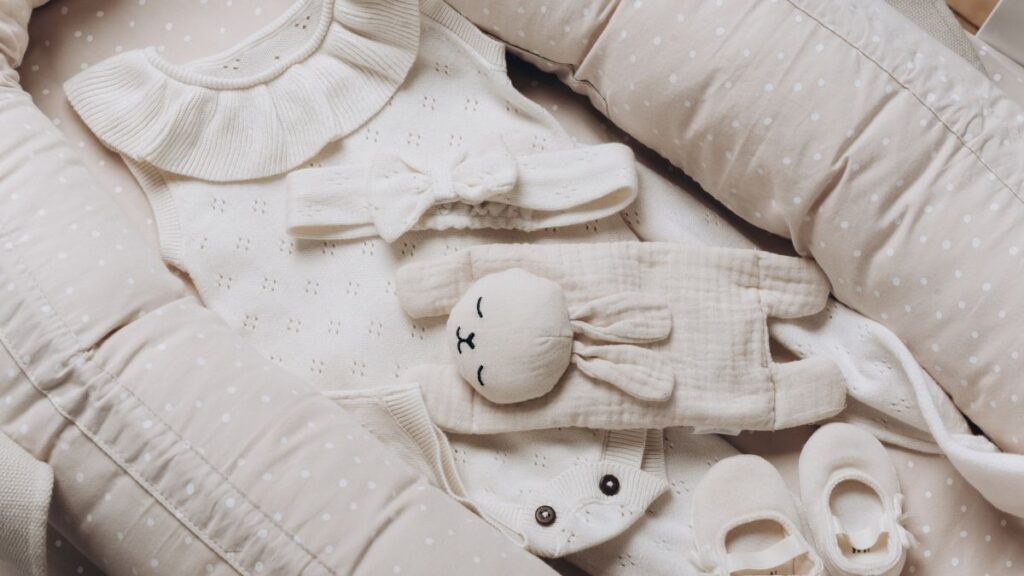
- Materials and Certifications: They use GOTS-certified organic cotton for their clothing, guaranteeing every piece is pure and mild. Their fabrics are known for being exceptionally soft, with a slight stretch that permits for comfy movement.
- What We Love: The “Cuddle Boxes” and hospital layette sets are perfectly curated presents for brand-new parents. Their designs are elegant and modern, including lovely, whimsical prints that are unique to the brand. The attention to detail, from lead-free zippers to wise snaps, appears in every garment.
- Best For: Newborn essentials, layette sets, and special event clothing that are as comfy as they are beautiful. Their “Always” blankets are a computer system registry must-have.
Kate Quinn: Cult-Favorite for Unique Prints and Earthy Tones.
Kate Quinn has actually gathered a passionate following for its distinctive visual, including advanced color palettes and unique, artistic prints. The brand name uses high-end style at an affordable price point, especially during their regular sales.
- Materials and Certifications: Kate Quinn utilizes a variety of natural products, consisting of GOTS-certified natural cotton and incredibly soft bamboo viscose. Their focus on natural fibers ensures comfort and breathability.
- What We Love: The brand’s style is indisputable. The earthy tones, vintage-inspired florals, and animal prints are lovely and trendy. They release brand-new collections frequently, keeping their offerings exciting and fresh. The range of styles, from timeless bodysuits to sophisticated bubble rompers, is outstanding.
- Best For: Parents who appreciate fashion-forward design and unique color stories. Developing an elegant, collaborative wardrobe for your baby is simple with their cohesive collections.
Pact: Affordable Organic Basics for the Whole Family.
Pact’s objective is to make natural clothing an inexpensive and accessible option for everyone. They offer a vast array of essentials for children, adults, and babies, all produced in Fair Trade Certified factories.
- Materials and Certifications: Pact uses GOTS-certified natural cotton and is a Fair Trade USA licensed business. This double dedication guarantees both environmental and social responsibility.
- What We Love: The value proposal is exceptional. The pact shows that you don’t have to compromise on principles or quality for the price. Their collection concentrates on basic patterns and solid-colored essentials, making them ideal for constructing a foundational wardrobe. The multi-packs of bodysuits and leggings are an exceptional value.
- Best For: Budget-conscious parents seeking to stock up on premium, ethically made basics. Their essentials are perfect for daily play and layering.
L’ovedbaby: Minimalist Style and Functional Design.
L’ovedbaby is known for its minimalist visuals and highly functional designs. The brand name focuses on producing comfortable, functional pieces that make life easier for parents without compromising style.
- Materials and Certifications: They use 100% GOTS-certified organic cotton, and their signature soft color combination is achieved with safe, low-impact dyes.
- What We Love: The Gl Gl’oved-Sleeve ™ style, which features fold-over mitten cuffs to avoid scratching, is a genius function on their bodysuits and sleepers. Their footed overalls are a parent favorite for their trim fit and functionality. The focus on intense colors makes mixing and matching effortless.
- Best For: Parents who choose a minimalist, gender-neutral closet. Their thoughtful style, combined with super-soft cotton, makes them a go-to choice for newborn comfort.
Essential Organic Baby Clothing Items for Your Registry.
Developing a child’s closet from scratch can be a challenging task. Concentrating on a core set of essential, high-quality organic pieces is the very best method. This “pill closet” guarantees you have what you require without being overwhelmed by items your child will quickly outgrow.
1. Organic Cotton Bodysuits (Short and Long-Sleeved).
The bodysuit, or onesie, is the workhorse of any infant’s wardrobe. Decide on natural cotton bodysuits with envelope necklines for easy pulling over the head and strong snaps at the crotch for quick diaper changes.
2. Footed Sleepers (Zip-Up).
Babies invest a significant amount of time sleeping, making comfortable sleepwear a top concern. Organic cotton footed sleepers, typically referred to as “zip-ups” or “sleep and plays,” are a one-piece option that keeps your child relaxed from neck to toe. Look for two-way zippers, which allow you to change a diaper from the bottom without needing to undress the infant — a lifesaver during late-night diaper changes.
3. Comfortable Pants and Leggings.
Soft, stretchy natural cotton trousers or leggings are vital for coupling with bodysuits. They offer an additional layer of warmth and are best for youngsters who are beginning to move, crawl, and explore. Select designs with a mild, fabric-encased elastic waistband that won’t dig into your baby’s delicate stomach.
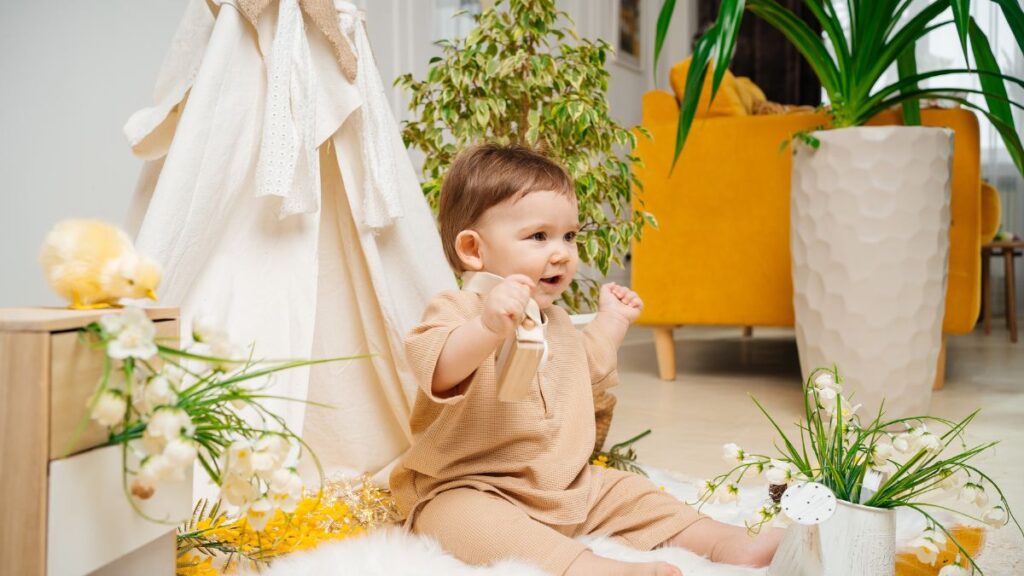
4. Swaddles and Sleep Sacks.
For babies, organic cotton swaddles are essential for helping them feel safe and secure, allowing them to sleep more peacefully. As they start to roll over and grow, transitioning to a natural sleep sack is the best option. A sleep sack, or wearable blanket, keeps your infant warm without the risks associated with loose blankets in the baby crib.
5. Mittens and hats.
A soft, natural cotton beanie is essential for newborns to help regulate their body temperature, particularly in the first few weeks. Scratch mitts, although not always necessary, can be helpful for babies who tend to scratch their faces. Look for brand names that incorporate fold-over mittens into the sleeves of their sleepers and dresses for added convenience.
6. Cardigans or Light Jackets.
A basic organic cotton cardigan or zip-up jacket is perfect for layering. It’s an easy method to add heat when you’re heading outside or into an air-conditioned area. Select neutral colors that can be worn over any attire.
Caring for Organic Baby Clothes to Maximize Their Lifespan.
Investing in top-quality organic infant clothing means you’ll want to take care of it correctly to maintain its softness and sturdiness. Mild care can extend the life of these garments, ensuring they can be used by younger siblings or passed on to others.
- Wash Before First Use: Always clean brand-new clothing before your child wears it to eliminate any dust or particles from the production and shipping process.
- Use a Gentle, Fragrance-Free Detergent: A child’s skin can be sensitive to the severe chemicals and scents in conventional laundry detergents. Choose a plant-based, hypoallergenic detergent specifically designed for sensitive skin.
- Wash in Cold Water: Washing with cold water on a gentle cycle is better for the environment and helps preserve the color and integrity of the organic cotton fibers. It also prevents shrinkage.
- Treat Stains Promptly: Baby clothes are prone to stains. Treat them as quickly as possible with a natural stain remover. Sun-drying can also be a natural and surprisingly effective way to bleach out stubborn discolorations, particularly on white fabrics.
- Tumble Dry on Low or Line Dry: High heat can harm natural fibers and cause clothing to shrink or wear out quickly. Topple dry on the most affordable heat setting or, even better, line dry your infant’s clothes. Line drying is mild on the fabric and conserves energy.
By following these simple care guidelines, you can keep your child’s clothes looking their best for as long as possible.
Frequently Asked Questions (FAQ).
Q: Are organic children’s clothing worth the extra cost?
A: While organic baby clothing can have a higher initial cost, many parents find it to be a beneficial investment. The higher quality of natural fibers often suggests that the clothes are more resilient and last longer, holding up much better to regular cleaning. This “hand-me-down” quality means they can be utilized for multiple children. Most importantly, the expense reflects a commitment to your infant’s health (by avoiding chemical residues) and ecological sustainability.
Q: What is the distinction between bamboo and natural cotton for children’s clothes?
A: Both are popular choices for soft child clothing. Organic cotton is renowned and celebrated for its purity, breathability, and hypoallergenic properties, backed by the robust GOTS accreditation. Bamboo material is understood for its smooth softness and moisture-wicking abilities. However, most bamboo fabric is a type of viscose or rayon, and its production procedure can involve severe chemicals. When selecting bamboo, look for closed-loop production techniques to ensure it’s more eco-friendly. For pureness and ensured ethical production, GOTS-certified organic cotton is usually the superior option.
Q: How many newborn clothes do I truly require?
A: Newborns go through multiple attire changes a day due to spit-up and diaper leakages. A good beginning point is to have 7-10 bodysuits, 5-7 sleepers, five sets of pants, a couple of swaddles, and several hats. This permits you to go a day or more without doing laundry. It’s smart not to overbuy in the newborn size, as babies grow extremely fast in the first couple of months.
Q: Can organic clothes assist with my child’s eczema?
A: Yes, lots of moms and dads discover that switching to natural clothing can significantly help manage their baby’s eczema. Eczema-prone skin is easily irritated and extremely sensitive to the chemical residues, dyes, and rough textures found in some conventional clothing. The softness, breathability, and chemical-free nature of GOTS-certified natural cotton can help reduce skin inflammation and prevent flare-ups, providing much-needed convenience for your child.
Q: Where can I find affordable, natural baby clothes?
A: Brands like Pact specialize in making affordable organic fundamentals. Furthermore, consider shopping at second-hand kids ‘ stores or online marketplaces, where you can often find top-quality brand names in excellent condition at a fraction of the original price.
As parents become more conscious of the materials touching their little one’s delicate skin, the demand for organic children’s clothes has grown considerably. We will delve into why natural cotton is an exceptional option, explore other sustainable products, and review the leading brands that are setting the standard in adorable and ethical child fashion. When shopping for organic baby clothes, you will encounter various labels and certifications. Organic cotton footed sleepers, often referred to as “zip-ups” or “sleep and plays,” are a one-piece option that keeps your baby cozy from head to toe. A: While natural infant clothing can have a greater initial cost, numerous parents find it to be a worthwhile financial investment.
<script type="application/ld+json">
{
"@context": "https://schema.org",
"@type": "BlogPosting",
"mainEntityOfPage": {
"@type": "WebPage",
"@id": "https://pinmebaby.com/best-organic-baby-clothes-for-comfort-and-charm-2025/"
},
"headline": "Best Organic Baby Clothes for Comfort and Charm 2025",
"description": "Best organic baby clothes organic baby clothes aren’t simply a fleeting pattern– they represent a mindful option for sustainability, comfort, and health. Unlike standard child clothing, which may rely on chemical-laden dyes and synthetic materials, organic clothing supplies peace of mind.",
"image": "https://pinmebaby.com/wp-content/uploads/2025/09/best-organic-baby-clothes-6.jpg",
"author": {
"@type": "Person",
"name": "Shokhina Begum",
"url": "https://pinmebaby.com/about-us/"
},
"publisher": {
"@type": "Organization",
"name": "Shokhina Begum",
"logo": {
"@type": "ImageObject",
"url": "https://pinmebaby.com/wp-content/uploads/2025/09/cropped-pinmebaby.jpg"
}
},
"datePublished": "2025-09-13",
"dateModified": "2025-09-13"
}
</script>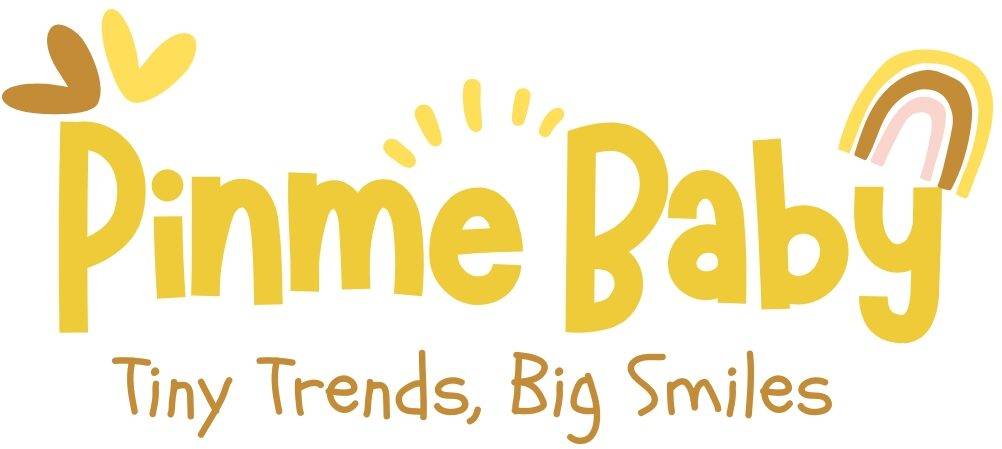
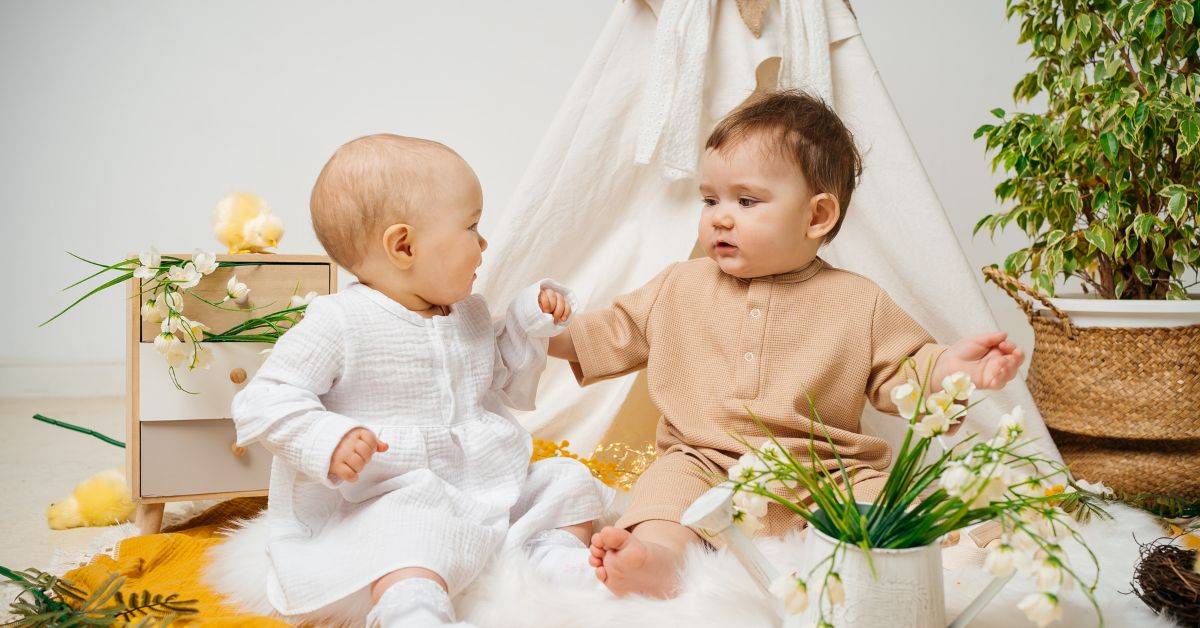
88na02
lms0r3